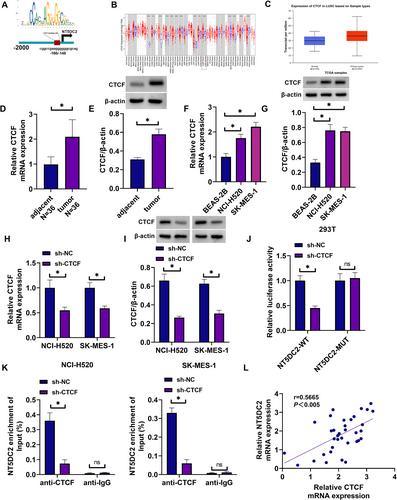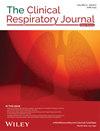Lung squamous cell carcinoma (LUSC) is a type of lung cancer that develops in the squamous cells. It is known to be promoted by the activation of various signaling pathways and the dysregulation of key regulatory molecules. One such molecule, 5′-nucleotidase domain containing 2 (NT5DC2), has been identified as a critical regulator in various cancers including lung cancer. However, there are no data regarding its role in LUSC.
The mRNA expression of insulin-like growth factor 2 mRNA–binding protein 3 (IGF2BP3), CCCTC-binding factor (CTCF), and NT5DC2 was analyzed using quantitative real-time polymerase chain reaction (qRT-PCR), whereas their protein expression was assessed using a western blotting assay. Cell proliferation was determined using a cell counting kit-8 (CCK-8) assay. Cell apoptosis, CD11b expression, and CD206 expression were analyzed using flow cytometry. Tube formation was assessed through a tube formation assay. Glucose consumption, lactate production, and ATP levels were measured using colorimetric methods. The effect of NT5DC2 on the malignant progression of LUSC cells was analyzed using a xenograft mouse model assay. The levels of transforming growth factor-beta 1 (TGF-β1) and interleukin-10 (IL-10) were detected using enzyme-linked immunosorbent assays. The associations among IGF2BP3, CTCF and NT5DC2 were identified using dual-luciferase reporter assay, RNA immunoprecipitation assay and m6A RNA immunoprecipitation assay.
The expression of NT5DC2 was found to be upregulated in LUSC tissues and cells when compared with normal lung tissues and normal human bronchial epithelial cells. Silencing of NT5DC2 inhibited LUSC cell proliferation, tube formation, glycolysis, M2 macrophage polarization, and tumor formation while inducing cell apoptosis. In addition, CTCF was found to transcriptionally activate NT5DC2 in LUSC cells. IGF2BP3 stabilized the mRNA expression of CTCF through m6A methylation. Further, overexpression of CTCF or NT5DC2 attenuated the effects of IGF2BP3 silencing in both NCI-520 and SK-MES-1 cells.
The IGF2BP3/CTCF axis–dependent NT5DC2 promotes M2 macrophage polarization, thereby enhancing the malignant progression of LUSC. This study was the first to reveal the role of NT5DC2 in LUSC and the underlying mechanism. The result suggests that targeting the IGF2BP3/CTCF/NT5DC2 axis may have clinical significance in the treatment of LUSC.



